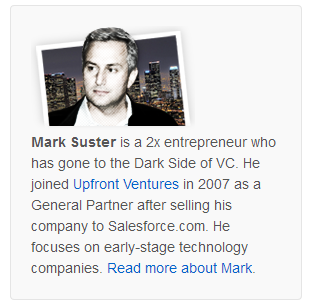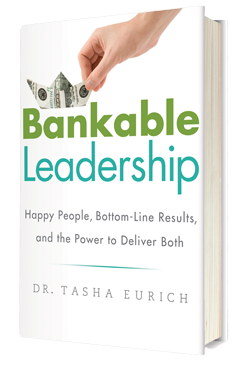 Earlier this year, Wildfire (the Google-owned company that helps businesses create social media apps) announced they were retiring their small business offerings. Wildfire also happens to be one of my company’s competitors, so the news caught my attention. Their decision was baffling to me. It seemed like they were shutting the door on thousands of customers by eliminating their basic plans — which meant only a fraction of small business owners would be able afford to use Wildfire’s product.
Earlier this year, Wildfire (the Google-owned company that helps businesses create social media apps) announced they were retiring their small business offerings. Wildfire also happens to be one of my company’s competitors, so the news caught my attention. Their decision was baffling to me. It seemed like they were shutting the door on thousands of customers by eliminating their basic plans — which meant only a fraction of small business owners would be able afford to use Wildfire’s product.
This got me thinking about scale. Wildfire’s architecture must require lots of manual attention, which in turn requires a huge staff. If a small business client and a Fortune 500 client require the same amount of effort, I can see why at a certain point, they had to cut the strings.
Here are a few things to consider if you want to scale your product or service:
Grow your company without growing your staff (too much).
Social coupon-sharing companies came out of nowhere and revolutionized the coupon concept. And while I can see how they grew so quickly because of their innovative idea, from what I can tell most of the models still require a traditional sales team to reach out to the local small business owners who are the mostly likely to use their product. Yes, they’re making big profits, but they have a huge payroll; I’m not sure the model can be scaled efficiently.
Automate what can be automated.
If I were building the next coupon-sharing business, I’d make offer a do-it-yourself coupon creation option. This is sort of what I did with ShortStack. Before my team created ShortStack, we had a successful web design agency. The company was doing well, but was labor-intensive (follow leads, pitch clients, put together RFPs, etc.) and required more staffing resources than I could manage to grow in a meaningful way.
Soon, I realized I’d be better off if my team created a DIY version of what we were using in house and offer it to everyone. In essence, we switched from a service model to a product model. Yes, we still have some clients who need hand-holding, but the vast majority of our users can use what we make right out of the proverbial box. The automation model allows us to serve 200,000+ users with a staff of 12, versus 20 clients with a staff of 12.
Shift from outbound to inbound marketing.
Not every company can afford to have a sales team out pounding the pavement. People are expensive! Instead, think about how to pivot so you can bring customers to you rather than having to chase after them. I know this won’t work for every type of business, but I’m finding that having a small but dedicated content-marketing team is turning out to be way more cost-effective than spending money on advertising.
My analogy is that blog posts, infographics, etc. are like solar-powered cars. Advertising is the gas guzzler. We have content that was created last year that still gets shared on Twitter, Facebook, LinkedIn, etc. and leads people to our company website and blog. I’d rather devote resources to my development team who work on making our product better and better and to my content team who gets the word out.
Consider the possibility of franchising.
I’ve focused mostly on technology here, but there is a scaling option for other sorts of businesses: franchising. Let’s say you own a successful cupcake bakery in a big city. You get lots of great press and have loyal customers, but opening shops around town might be too difficult. But if you focus on your idea/model/brand — and on packaging the best parts of what is working for you — and offer them to aspiring bakers in any city, you will make a percentage of the sales of several small businesses without having to manage the staff it takes to run them. (Word to the wise: make sure you have have good legal counsel to prevent spawning your own competition.)
If you think about scaling from the outset, you’ll be more likely to grow your company without huge hiccups. And you’ll be less likely to have to abandon the customers who helped make you successful in the first place.
Jim Belosic is the co-founder and CEO of Pancake Labs, a software company based in Reno, Nev. The company is best known for its flagship product, ShortStack, software that’s designed to help small business owners and designers create custom apps that harness the power of social media (www.shortstack.com). ShortStack recently celebrated its second birthday; Pancake Laboratories has several new software products slated for release in 2013.
The Young Entrepreneur Council (YEC) is an invite-only organization comprised of the world’s most promising young entrepreneurs. In partnership with Citi, the YEC recently launched #StartupLab, a free virtual mentorship program that helps millions of entrepreneurs start and grow businesses via live video chats, an expert content library and email lessons.

















 If you feel like you’re always behind the times in startup trends, you’re not alone. Journalists build their entire careers on being analysts of the industry, trying to become the one who predicted the next Apple or Google. Following those journalists will connect you with greater trends and analysis. Many of them build and maintain lists of prominent industry figures you should follow.
If you feel like you’re always behind the times in startup trends, you’re not alone. Journalists build their entire careers on being analysts of the industry, trying to become the one who predicted the next Apple or Google. Following those journalists will connect you with greater trends and analysis. Many of them build and maintain lists of prominent industry figures you should follow. It’s never the wrong time to de-clutter and simplify. Just as you should bring fresh air into a stuffy house, you can also breathe life into a company to achieve an improved state of success.
It’s never the wrong time to de-clutter and simplify. Just as you should bring fresh air into a stuffy house, you can also breathe life into a company to achieve an improved state of success. It is not easy to be the CEO of an up-and-coming startup, especially when you are frequently out of your office talking to investors and the actual time you spend in contact with your team is limited. It gets even more complicated when you manage multiple teams working in different cities.
It is not easy to be the CEO of an up-and-coming startup, especially when you are frequently out of your office talking to investors and the actual time you spend in contact with your team is limited. It gets even more complicated when you manage multiple teams working in different cities.



 You would think that advances in technology would reduce the amount of hours you spend at work. You’d be wrong, as
You would think that advances in technology would reduce the amount of hours you spend at work. You’d be wrong, as 


